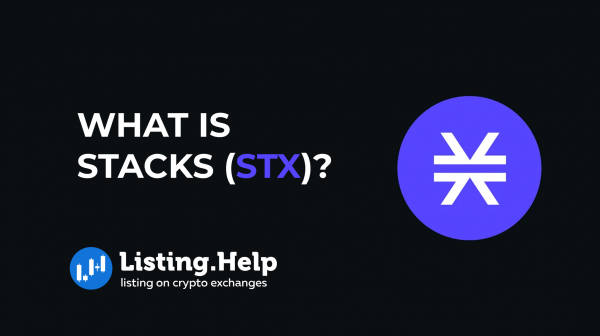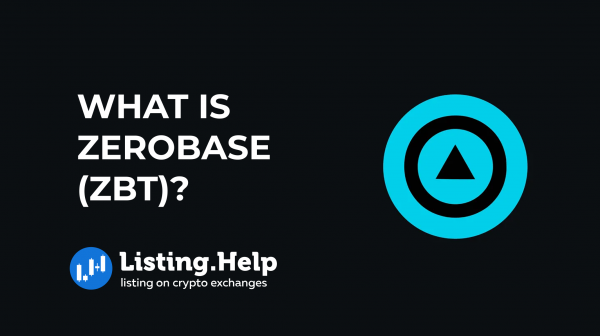What Is an Airdrop in Crypto, and How Does It Work?
 November 29, 2023
November 29, 2023 Updated: January 27 2025, 07:23
Updated: January 27 2025, 07:23
LEAVE A REQUEST
Launching your own token project? Our experts are ready to help with listing on exchanges, market making, marketing and other solutions
SUBMIT APPLICATIONA cryptocurrency airdrop is essentially the free distribution of new tokens or coins from a project to various members of the crypto community.
Projects use airdrops as a strategy to enhance visibility and foster interest, encouraging people to become active users or investors in their projects. These tokens are distributed at no cost, though certain airdrops might necessitate participants to perform specific actions to receive their tokens. Airdrops gained prominence during the surge of initial coin offerings (ICOs) in 2017 and continue to be a common tactic in the crypto world. Moreover, airdrops are frequently viewed as a form of passive income in the cryptocurrency space, offering potential earnings without active trading.
How Do Crypto Airdrops Work?
The process of a crypto airdrop typically involves a project setting out certain criteria that need to be met by participants to qualify. These criteria might include actions like joining a Telegram group linked to the project, following the project on social media, subscribing to newsletters, or holding a minimum quantity of a certain cryptocurrency. Sometimes, eligibility for the airdrop is restricted to wallets that have engaged with the project’s platform prior to a specified date.
It’s important to note that the criteria for airdrops are not always disclosed in advance. In some notable cases, projects have unexpectedly rewarded their active users with new tokens, revealing the qualifying conditions only after the airdrop has occurred. The approach to airdrops varies significantly from one project to another, with each having its unique method and strategy.
Why Do Free Crypto Airdrops Occur?
Cryptocurrency airdrops are a strategic approach used by many projects for varied purposes, including generating excitement and efficiently distributing their coin or token supply.
Here’s an overview of why these airdrops happen:
- Fair Distribution of Tokens: A key objective of airdrops is to ensure a broad and fair distribution of coins or tokens. This helps reduce the concentration of holdings among a few large investors, promoting a more decentralized ownership structure.
- Rewarding Early Supporters: Projects often use airdrops to thank their initial backers and investors, especially those who participated in early ICOs. This approach not only shows appreciation but also encourages these supporters to continue holding the main tokens.
- Spreading Awareness: Airdrops are sometimes used simply to increase awareness about new cryptocurrencies. Holders of well-known cryptocurrencies like Ethereum are often targeted for these airdrops.
- Marketing and Lead Generation: A very common use of airdrops today is for marketing purposes. They are used to gather leads for future business opportunities. You’ll often see projects offering tokens for simple actions like joining a Telegram group, signing up, or following on social media.
- Post-Hard Fork Distribution: Airdrops are also prevalent following hard forks of major cryptocurrencies like Bitcoin and Ethereum. New coins created from these forks are distributed to holders of the original coins. Past examples include Bitcoin Cash and Bitcoin Gold.
Top Types of Cryptocurrency Airdrops
Standard Airdrop
A standard crypto airdrop is pretty straightforward. If you want to participate, you simply indicate your interest and provide your wallet address. Some don’t need more than this. These airdrops have a fixed number of tokens for distribution and cap the amount each participant can receive. They might be over quickly, and the simplicity of the process sometimes leads to individuals using multiple wallets to claim more than their fair share.
Bounty Airdrop
Bounty airdrops are more interactive. They involve completing tasks like social media engagement or bringing in new participants. These tasks might include things like sharing posts, joining a newsletter, or participating in community channels. The more tasks you complete, the more points you earn, which translates to a larger share of the airdrop. Often, there’s a minimum point threshold to qualify for the airdrop.
Holder Airdrop
Holder airdrops are automatic and based on your existing token holdings. Since blockchain ledgers are public, it’s easy to verify who holds what. One downside is that not all token holders may want these airdrops. In some cases, airdrops are only given to those holding a certain amount of tokens, or the distribution might be proportionate to the amount held.
Exclusive Airdrop
Exclusive airdrops are a more targeted form of holder airdrops. They’re not just about how many tokens you have. Selection criteria might include factors like engagement with the project, non-token investment, or community involvement. This approach can reward those closely involved with a project, sometimes including individuals who don’t hold any tokens.
Raffle Airdrop
Raffle airdrops can be a combination of any of the above types. Participants might earn a raffle ticket through various means – holding tokens, completing tasks, or just showing interest. Since the demand for airdrops usually exceeds supply, a raffle system is used to randomly pick a limited number of recipients.
Crypto Airdrop Process
The initiation of a crypto airdrop is typically a strategic decision by a project or company, often influenced by market tactics, significant network changes like hard forks, or as a means to reward current investors. The first crucial step involves determining the method and eligibility criteria for the airdrop.
For wide-reaching, general airdrops, the process begins with a public campaign to gather information from interested individuals. Typically, this involves collecting wallet addresses, and sometimes email addresses, to expand the company’s contact base.
In more specific airdrop scenarios, the approach may involve a ‘snapshot’ – a fixed point in time used to identify eligible addresses. For instance, a snapshot might record addresses holding a minimum number of tokens at a certain moment, like midnight on December 31st. It’s important to note that any transactions after this snapshot won’t affect airdrop eligibility, often leading to price fluctuations in anticipation of these snapshots.
After finalizing the list of recipients, the actual distribution of the airdrop is usually executed via smart contracts. Companies might use their Treasury wallet for this purpose and often publicly share the transaction details to ensure transparency. This transaction record will display the transfer of the airdrop from the company’s wallet to the recipients.
Recipients typically receive the airdropped tokens directly in their wallets. In some cases, they might need to manually add the token and its address to their wallet software to correctly display the new balance. This process ensures a seamless transfer of value to the chosen participants in the airdrop.
How to Avoid Airdrop Scams?
Airdrop scams are a prevalent issue, often leading to the loss of funds when unsuspecting users claim these tokens. However, there are effective measures to safeguard yourself from such scams.
The first and most crucial step is to conduct in-depth research on the airdrop’s associated project. It’s vital to scrutinize details about the team behind the project, their expertise, and their involvement in past projects. If you find it challenging to confirm the team’s background or encounter a lack of transparency, it could be an indication of a scam.
Carefully validating the project’s official communication channels is another essential step. Scammers often create counterfeit websites and social media profiles mimicking legitimate projects. Pay close attention to the website’s URL and look for minor discrepancies or spelling errors, which are common indicators of a fraudulent site. Authenticating the project’s social media presence is equally important. Check for verification badges and cross-check information with reliable sources.
Be cautious of airdrops that appear overly generous. If an airdrop promises substantial rewards with little to no effort, it’s advisable to be skeptical and further validate the project’s credibility.
Keeping up-to-date with reputable sources in the cryptocurrency industry, such as trusted news outlets, forums, and social media channels, can also help. These platforms often share insights and updates about airdrops and can alert you to potential scams.
It’s crucial to maintain a critical perspective on airdrops and thoroughly vet them before engaging. Be especially careful if an airdrop requires linking your wallet to its website, as this can be a direct route to potential scams.
Conclusion
Airdrops present an intriguing chance to acquire digital currency at no cost. It’s crucial, though, to tread carefully and stay alert to avoid deceptive schemes. Keep in mind that airdrops might offer you complimentary tokens, but their worth and future prospects are uncertain.

For more insights and updates in the crypto space, don’t forget to check out our blog at https://listing.help/blog.







 December 18, 2025
December 18, 2025 








